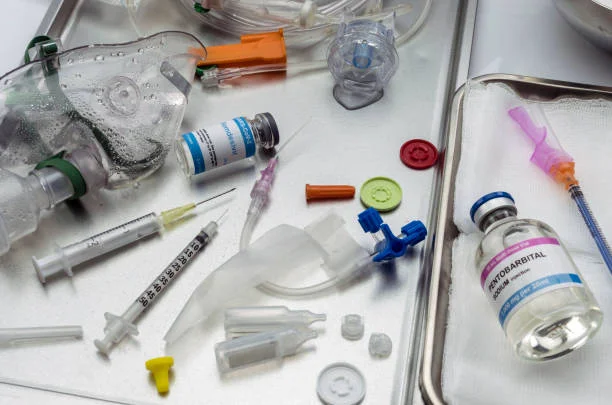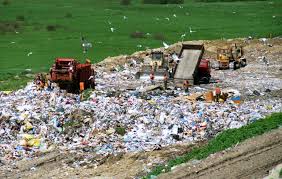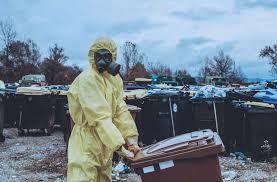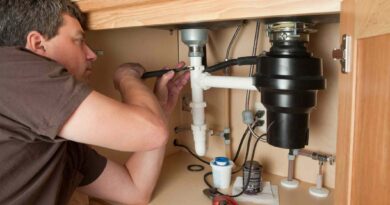Clinical Wastes Complete Management Guide
Waste produced during the diagnosis, treatment, or vaccination of people or animals is referred to as clinical wastes. Sharps (needles, syringes, and other items that might puncture wounds), pathological waste (human or animal tissue, bodily fluids, and other items that may carry infectious organisms), and pharmaceutical waste are examples of this sort of garbage.
Several national and international rules and regulations govern the handling and disposal of clinical waste to guarantee that it is done so properly and without contaminating the environment or spreading disease. Managing clinical waste improperly may have detrimental implications on the environment and public health. These impacts include, among others:
Spread of infectious diseases: Blood-borne infections like HIV and hepatitis may spread due to improper disposal of clinical waste, such as discarded needles and other sharps.
Pollution of the air, water, and soil: Burning medical waste at high temperatures may discharge harmful pollutants into the atmosphere, and burying medical trash can pollute the soil and groundwater.
Wildlife at risk: Wildlife that consumes or becomes entangled in poorly disposed of clinical waste may suffer injuries or perhaps die.
Legal and financial repercussions: Improper management of clinical waste may lead to penalties, legal action, and reputational harm for a hospital.
The management of clinical waste is essential for safeguarding the environment and public health. For the safe treatment and disposal of clinical waste, it is crucial that healthcare institutions, the government, and other waste management organizations closely adhere to the laws, policies, and established procedures.
It is crucial for healthcare institutions to abide by these laws and regulations regarding the management of clinical waste in order to stop the spread of illness and save the environment.
Read Also: Chemical Wastes Complete Management Guide
Ways To Manage Clinical Wastes Properly
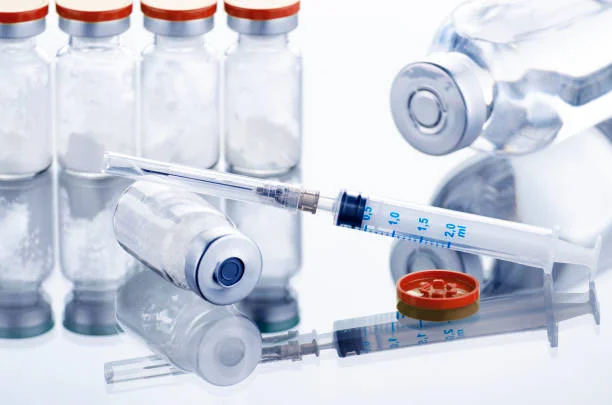
(1) Separation
Clinical waste segregation is the act of classifying various forms of medical waste into discrete groups so they may be handled and disposed of safely. Minimizing the danger of virus transmission and ensuring that the various forms of waste are processed in the most suitable and secure ways are the two goals of segregation.
Sharps (needles and other sharp objects), infectious trash (such as microbiological cultures and abandoned surgical supplies), and general garbage are typical forms of clinical waste (such as paper and plastic).
Depending on the facility and nation standards, the segregation should be accomplished using various color-coded containers or bags.
In order to stop the spread of infection and make handling and disposal simpler, clinical waste should be separated at the point of formation.
(2) Transportation and collection
Any waste produced during the diagnosis, treatment, or vaccination of people or animals is referred to as clinical waste. This comprises pathological waste such as body parts) and pharmaceutical waste in addition to sharps (such as needles such as expired drugs.
To reduce the danger of damage to the public and the environment, clinical waste must be appropriately collected and transferred. The facility that produces the garbage, such as a hospital or clinic, is normally in charge of collecting clinical waste.
Waste should be labeled appropriately and kept in approved containers, such as sharps containers for needles. To avoid unwanted access, the containers need to be kept in a safe location.
Specialized waste management organizations that are authorized to handle and transport clinical waste often handle the transportation of this trash. These businesses are in charge of moving the garbage in accordance with regional, state, and federal rules to a treatment or disposal facility.
To make sure that the trash is handled and delivered securely and in accordance with standards, it is crucial to engage a reliable and licensed clinical waste transportation service. The vehicles being utilized for the transportation should be properly identified and especially intended for the delivery of garbage.
Using the proper containers and trucks, clinical waste should be collected and transported in line with local laws.
(3) Therapy
Sharps (spent needles), lab trash, and human tissue are examples of the waste products produced by the medical and healthcare sectors. Depending on the kind of waste and the location, different national and municipal legislation govern the treatment and disposal of clinical waste.
The following are some typical techniques for handling medical waste:
I. Incineration: To minimize the amount of trash and disinfect it, clinical waste is burnt at high temperatures. Sharps and other infectious garbage are routinely disposed of using this technique.
Read Also: Biomedical Wastes Complete Management Guide
II. Autoclaving: This technique sterilizes medical waste by applying pressure to steam. It is often used for waste items like human tissue and lab cultures that cannot be properly burned in an incinerator.
III. Chemical treatment: To disinfect and sterilize medical waste, certain chemicals may be utilized, including chlorine and hydrogen peroxide. Most pathological wastes are treated with this technique.
IV. Landfill: If non-infectious clinical waste is bagged and labeled correctly, it may sometimes be disposed of at a landfill.
Clinical waste must be handled and treated in a way that protects the safety of the personnel engaged, as well as the broader community, and that has the least possible negative effects on the environment.
Clinical waste may be processed before disposal, depending on the kind of waste and local laws. This could include burning, sterilization, or disinfection.
(4) Elimination
Clinical waste is any waste material produced during the diagnosis, treatment, or vaccination of people or animals, as well as during potential animal usage in research projects.
To stop the spread of illness and reduce the possibility of damage to both human health and the environment, this sort of waste must be handled, transported, and disposed of in a safe and appropriate way.
Sharps (needles and other things that may puncture easily), microbiological trash, and pathological waste must normally be separated before using the proper treatment and disposal procedures to dispose of clinical waste.
Deep burial, incineration, and autoclaving are a few examples of treatment techniques. The kind of garbage and local legislation will determine the disposal technique employed.
To ensure that it is handled and transported safely, garbage must be packaged and labeled properly. Professional trash management organizations often pick up the garbage after that, transporting it to the proper location for safe disposal.
Clinical waste management must comply with legal requirements, and it is the generator’s duty to see to it that this happens. The majority of the time, it is necessary to treat clinical waste at a specialist facility and dispose of it in a way that is safe for the environment and the general public.
This may include chemical processing, autoclaving, or incineration. As an alternative, it may be disposed of in designated clinical waste landfills, which are meant to keep garbage separate and stop it from polluting the environment.
It is crucial to have a documented strategy that details the management of clinical waste, as well as an emergency action plan for releases or spills, frequent staff training, and instructions for managing and disposing of the waste safely.
Read Also: 4 Types Of Financial Statements
